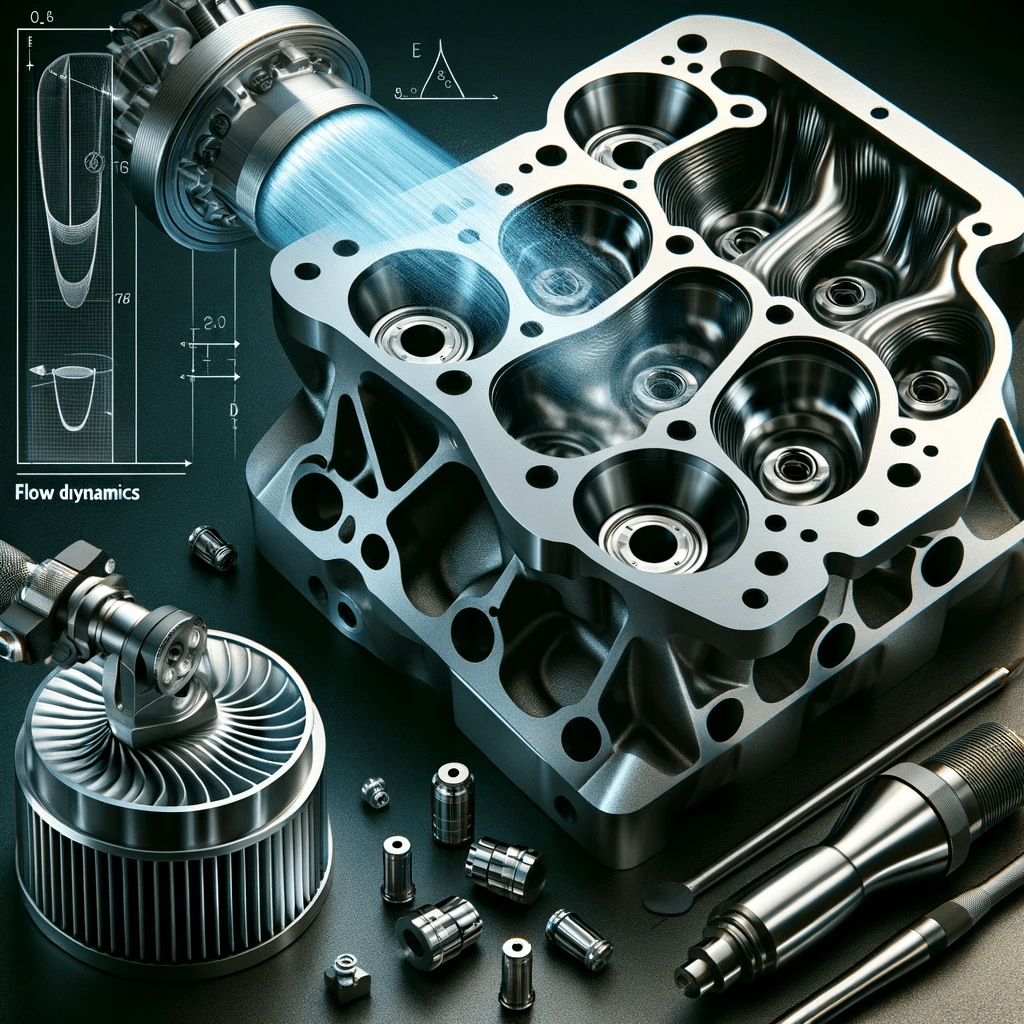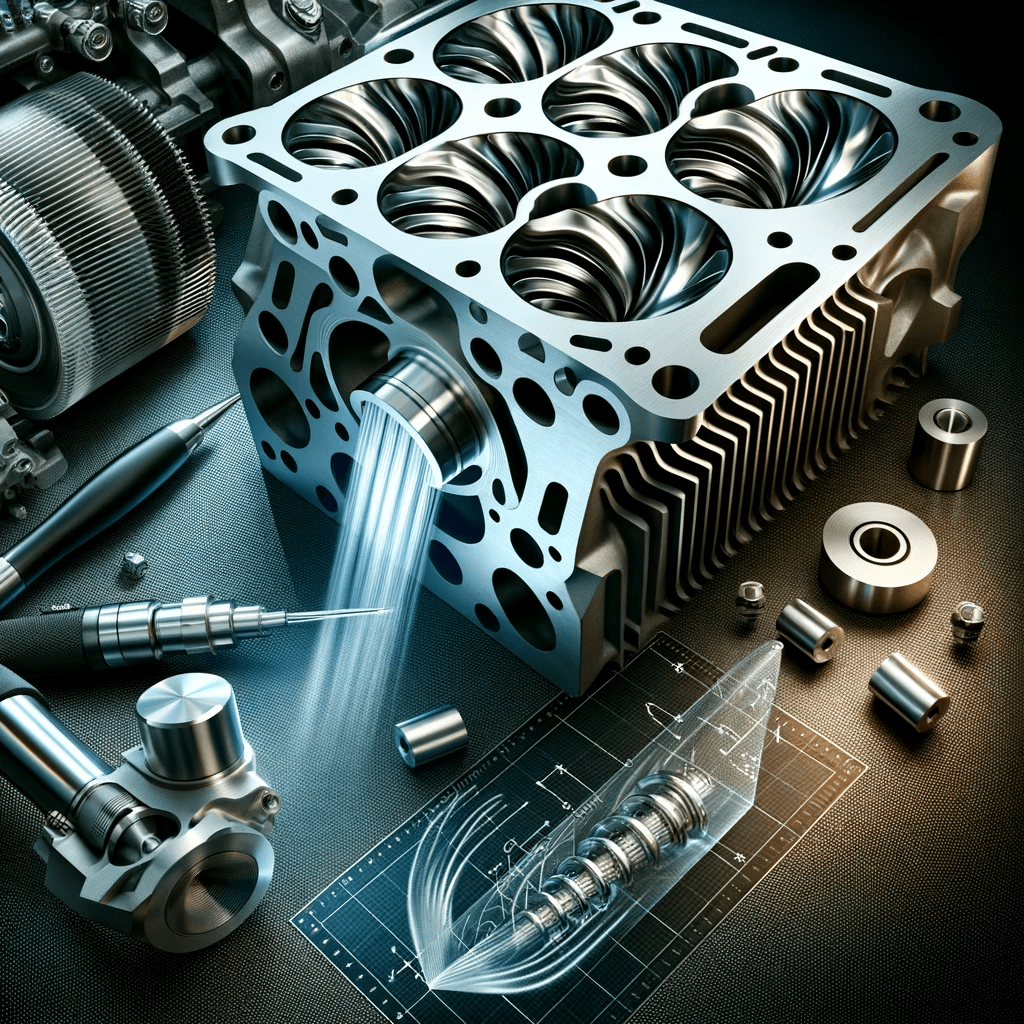Key Takeaways:
- Cylinder Head Porting – Enhances engine breathing for improved power and torque.
- Types of Porting – Basic cleanup, street/strip porting, and full competition porting.
- Benefits – Increased horsepower, better fuel efficiency, and smoother engine operation.
- Considerations – Requires skilled expertise; potential increased stress on engine components.
- Complementary Upgrades – Consider pairing with camshaft modifications and ECU remapping for optimal results.
Cylinder head porting is the high-octane equivalent of a sprinter clearing their nasal passages before a race. It’s all about optimizing airflow, ensuring your engine breathes with the ferocity of a performance beast. Let’s drill down into the details.
What is Cylinder Head Porting?

At its core, cylinder head porting refers to modifying the intake and exhaust ports of an internal combustion engine to improve the quality and quantity of the air flow. Think of it as sculpting the airways for peak performance.
The Three Tiers of Porting:
- Basic Cleanup: Removes casting imperfections.
- Street/Strip Porting: More extensive, tailored to performance enthusiasts.
- Full Competition Porting: The pinnacle of porting for maximum power.
Benefits of Porting:
- Power Boost: By smoothing out the pathways air takes, porting allows for more air and fuel to combust, translating to more ponies under the hood.
- Enhanced Efficiency: Smoother flow equals less energy waste, offering a tick up in fuel economy.
- Revved-up Response: Improved air flow can also lead to a snappier throttle response.
Expertise Required:
This isn’t your typical DIY. Porting demands a blend of art and science, requiring a skilled hand and a keen understanding of engine dynamics.
Performance Synergy:
Pair porting with other upgrades like camshaft modifications for a symphony of speed. Considering a more holistic approach? Dive into basics of engine upgrades 101 to start your journey.
Real-Life Example:
Imagine your typical muscle car, say a ’69 Camaro. Stock, it’s already a force. But with expert porting, that same Camaro can leave others in its dust, especially if it’s had a rendezvous with ECU remapping basics to finesse the fuel and ignition curves.
When to Consider Porting?

It’s about goals. Chasing a few extra horses for the street? Basic porting might do. If you’re lining up on the strip or circuit, consider the more extensive options.
Risks and Rewards:
While the allure of added power is tempting, remember, increasing air flow can stress other engine components. This is where balance is key, and consulting with professionals like those at Nashville Performance can be a game-changer.
Table of Potential Upgrades and Pairings:
| Upgrade Type | Expected Benefit | Recommended Pairing |
|---|---|---|
| Basic Porting | Improved air flow | Improving fuel injection |
| Street/Strip Porting | Increased power | ECU Remapping |
| Full Competition Porting | Maximum horsepower | Forced Induction Benefits |
Final Thoughts:
Cylinder head porting is a gateway to untapped potential in your engine. Whether you’re fine-tuning for the street or unleashing a track monster, porting can be a pivotal upgrade. Remember, the key to a successful port job is not just in the work itself but in harmonizing it with your engine’s ecosystem. Ready to go full throttle? Check out Nashville Performance for expertise and insights.
Cylinder Head Porting Q&A Section
Q1: What exactly is cylinder head porting?
A1: Cylinder head porting is the process of modifying the intake and exhaust ports of an engine to improve the flow of air and gases, boosting power and efficiency.
Q2: Can porting a cylinder head damage my engine?
A2: If done incorrectly, yes. Porting must be performed by skilled professionals as it can alter engine dynamics and stress components. It’s a precision task where more is not always better.
Q3: What performance gains can I expect from cylinder head porting?
A3: While gains vary, a well-executed porting job can significantly increase horsepower and torque. For quantifiable improvements, consider pairing with camshaft upgrades.
Q4: How does porting affect engine longevity?
A4: Proper porting should not negatively affect engine longevity and may even improve it by optimizing airflow. However, aggressive porting for competition might require more frequent maintenance.
Q5: Is porting worth it for a daily driver?
A5: It can be if you’re seeking better performance and efficiency. A basic porting job can provide a more enjoyable daily driving experience.
Q6: Should I port my cylinder head when installing a turbocharger?
A6: Absolutely. Porting can complement forced induction by enhancing the engine’s ability to move more air, which is crucial for a turbocharged setup.
Q7: How long does porting take, and what’s the cost?
A7: The time and cost can vary widely depending on the engine and the extent of porting. It’s best to consult with a specialist like Nashville Performance for an accurate estimate.
Q8: Can I DIY cylinder head porting?
A8: It’s not recommended unless you have considerable experience and the right tools. Mistakes can be costly, so it’s wise to leave it to the experts.
Q9: How does cylinder head porting fit into an overall tuning strategy?
A9: Porting is one piece of the tuning puzzle. It works best when integrated with other modifications, like improving fuel injection and ECU remapping.
Q10: Where can I get my cylinder head ported?
A10: Choose a reputable performance shop with a track record of successful porting jobs. Nashville Performance offers the expertise needed for such precision work.